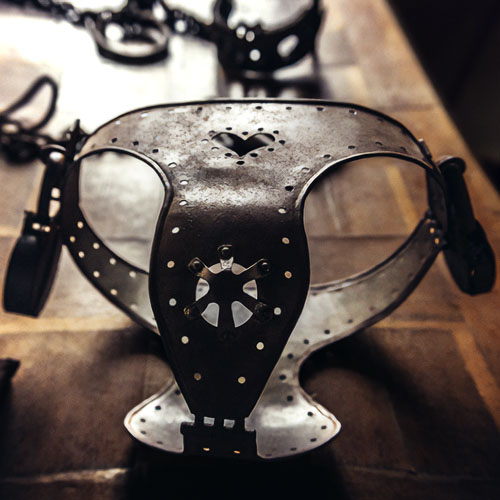The durable dram updated and the taste of flings to come.
Scotch Whiskey
Scotch! Now there’s a name to conjure with. On the one hand, it brings to mind visions of craggy green countryside and even craggier Highlanders. The blaze of tartans and the swirl of kilts, the haunting lilt of the bagpipes. On the other, it immediately suggests a comfortable bar at day’s end, exactly the right partner alongside you, and a firm grip on a glass of the stuff of life. Scotch whisky, sir, a veritable Rolls-Royce of the spirits. The national drink of the United States of America — or thereabouts. The drink of the man — and woman — of achievement, with all the mystique, panache, and cachet of people who’ve arrived.
Not to mention the people who’ve not quite arrived but are well on their way. For if you still cherish the notion that Scotch in the seventies is solely an “Establishment” drink, uncherish it. One reason Americans will consume something like twenty-two million cases of Scotch in 1975 is because more and more young comers — like you — are drinking it and relishing it for exactly what it is — an excellent whisky: light, unmistakable in flavor, made by men who regard their calling as a creative art.
Lord knows they’ve had enough time to perfect it. Way back in the days of the Highland Clans, when every Laird had his still, his whisky maker was as highly prized as his claymore — perhaps even more so. After all, you could always get a decent sword, but a decent drink was a pony of another color. The brew the Lairds knew was a tough, harsh, smoky concoction, far removed from the elegant spirit dispensed today, but it fired up the Scot and made him blithely impervious to the screech of the bagpipes and the cold, damp winds that whistled up his kilt — no mean feat for any spirit.
Along about the time Napoleon was heading back from Elba to meet his Waterloo, the distillation from all stills of less than 500 gallons capacity was outlawed in Scotland. This damn near caused a revolution, until it was pointed out to the canny Highlanders that they could make a good deal of silver by selling their whisky — something that for obvious reasons, had never occurred to them before. This, of course, put the matter in an entirely different light.
Well, the whisky — and the Scots — have come a long way since then. The Highlands haven’t really changed (and we have a secret feeling that a few Lairds in the remoter regions are still making a bagpipe-proof brew strictly for private consumption), but the distillers have. Centuries of refinement have gone into the product to give it the unique qualities it has today.
To begin at the beginning, Scotch starts off on the path to righteousness with that’s known in Scotland as grain whisky (grain neutral spirits in this country), which is distilled from barley and corn. Very little of this is consumed unblended, for this is the bedrock of the Scotch, the vehicle which carries and marries the subtle flavors of some fifty malt whiskies into one individual blend.
All other Scotch whiskies are barley malts. There are four major types, which take their names from the geographic regions in which they are made — Highlands, Lowlands, Campbeltown, and Islay — in more than a hundred distilleries. Yet no two malts are exactly alike.
The best come from the River Spey district, an area in the Highlands bounded roughly by Elgin on the west, Keith in the east, and Glenlivet forest in the south. These great Highlands malts are to Scotch what Chateaux Lafite, Latour, and Mouton Rothschild are to Bordeaux wines. They are the true superlatives — fragrant, light in body, rich in texture and flavor — that give so much individual character to your favorite blend. From the islands of Islay, Jura, and Skye come smokier malts, instantly recognizable by their heavy peat tang. The Campbeltowns are smoky and full-bodied , while the Lowlands tend to be gentler and softer in flavor.
What makes them all so different? The very same elements that make bourbon bourbon. The pure water that flows through soft peat beds and over red granite outcroppings. The Highland barley in the mash, rich in protein, which in turn guarantees richness in flavor. Then there’s the peat that fuels the fire that dries the barley that makes the Scotch that Mac Built. In short, all are unique ingredients that pertain only in this wee corner of the world. If you could combine these same elements in Kentucky, you could make a great malt there. You can’t, of course, any more than you can produce a true bourbon in the Spey valley. So since the essence of Scotch is the blend, and the blend cannot be achieved without the Highlands malts, Scotch whisky, as we enjoy it today, depends on this very local product.
And the Scotch we know is a relatively recent phenomenon. Until the middle of the last century, Scotch was a straight malt liquor, and, it was, for all practical purposes, strictly a local drink. Then one distiller, Andrew Usher by name, hit upon the idea of blending different types of whiskies, giving the end product a new smoothness and — by careful control of the blend — a barrel-by-barrel uniformity never before attained. What the House of Usher did; in effect, was to revolutionize the future of Scotch. The softer flavor caught on among the Sassenachs south of the border, and its fame gradually spread to the far corners of the British Empire.
Underlying the new popularity was the taste — the smooth, light, slightly smoky tang peculiar to the product. The smokiness is derived from “kilning” the barley malt (malt is germinated barley grain), that is, by drying or roasting it over a peat fire. Since peat is coal in its elementary state, it gives off an oily smoke that impregnates the grain. This quality is carried over into the mash and retained in the distillation.
Then comes the aging, usually in casks made of North American white oak that have previously been used to mature Scotch — though some distillers prefer old sherry casks. British law requires a minimum of three years in the barrel; but if the label bears no age statement, Scotch must be four years old before it is imported into this country This is convenient, for no master blender would even consider making his blend with whiskies less than three or four years old, and upon the skill of this man depends the fame and fortune of the brand. He will determine which of the hundred or so malts at his disposal he will use, in what proportion, and with what amount of grain whisky, to achieve his blend. The more Highlands he uses, the more expensive the product; the more grain whisky, the cheaper. Bearing these economic facts in mind, he is still concerned with only one result — the taste and the quality of the blend.
Once his selections have been made, the blend is returned to the cask for a further period of aging and marrying. And while we’re about it, a word or two about aging. … Scotch can be matured for five, eight, twelve, fifteen, twenty, or more years — the longer periods depending especially upon the craft and care of the maker, since Scotch too long in the wood can deteriorate. But no amount of aging will ever put into a Scotch (or a Canadian or bourbon) what is not there in the first place, viz., the quality of the distilled spirit and the fine hand — or palate — of the blender.
Americans, it seems, were not slow to recognize this quality. Scotch, naturally enough, got a huge popular boost after the repeal of Prohibition, when aged domestic whisky was a rarity in the land. Prior to that time, it was indeed an “Establishment” drink, the prerogative of those who could afford it. As an import, it was far more expensive than American whiskies and, to be honest, there was little general taste for it, most Americans at that time preferring the rounder, richer flavor and heft of domestic varieties.
But something happened. Over the past few decades there has been a significant trend to lightness in the flavor, body, and even color of the beverages we consume. And taste has become an increasingly important factor among younger whisky drinkers. Now, there’s a saying in some circles that Americans don’t like the taste of whisky. I don’t agree. So decided are Americans in their taste preferences that they are incredibly loyal to their preferred brand of Scotch. It seems to me that this would hardly be the case if all blends tasted more or less the same. So while J&B Rare is a top U.S. seller, you won’t find a Dewar’s man — or Cutty Sark, Johnnie Walker Red, Grants, Black and White, or Lauder’s men — switching to another standard. By the same token, you won’t find Bell’s ringing for 100 Pipers! In my view, taste — along with those invisible factors of prestige and mystique that cannot be measured — is what determines the consumer’s response to a brand in the bar or the liquor store. One distiller’s experiment seems to bear out this thesis. Trying to predict the market, he changed his blend to an even lighter flavor. The change was immediately recognized by the consumer and sales fell drastically. The original blend was abruptly resumed to offset a threatened wipeout.
While generally regulars won’t switch brands (if they do change, they usually make a quantum leap to premium eight- or twelve-year-olds) they are moving to Scotch bottled in America for the savings. By not shipping the bottle and by dint of a considerable excise duty and tax break on all container shipments, the savings are passed on to the retail customer. Price, of course, is always a factor, particularly in a period of recession. Witness the success of Inver House, now the largest seller among the Scotches bottled here.
Yet premium brands such as Chivas Regal, Johnnie Walker Black, Haig Pinch, Ballantine’s 12, etc., seem to be recession proof. A man may well cut corners in some areas, but apparently he won’t stop buying a premium Scotch. And we’re not talking about the executive set either. Even in this inflation year, Chivas, for example, is racking up a higher percentage of sales among young adults than it is in the over-forty bracket. Indeed, there’s no question that importers have become youth oriented. The premiums really got under way in the 1960’s — the era of the youth explosion, the consumer rebellion, women’s liberation, and a general shucking off of old standards — no pun intended. One importer I spoke with is convinced that taste — along with changing times — has everything to do with it. “We’ve had blind tastings of standard brands and premiums,” he said, “and in every single case the taster was able to distinguish the premium brand.”
I must admit that I’m the kind of drinker who stresses quality over quantity. I reserve for a fine premium Scotch the respect it merits. For me, it’s the state of the art, and I like to think it’s an occasion when I broach an eight- or twelve-year-old, pour it over a single ice cube in a tumbler, and add a touch of pure water for a tad of reflective sipping. In fact, I make it an occasion. Too many of us have lost the joy of fully appreciating what’s available, perhaps because we, like the times. are moving too fast. But just as superb service in a restaurant enhances a fine meal, or sharing something secret with a wonderful woman heightens the intimacy, due consideration for a great beverage simply emphasizes an appreciation of the joy it bestows.
And speaking of superlatives, if I were to dwell on Mecca in a mouthful, I might think of the twenty-one-year-olds (Scotches, of course) that are available. I once gave my grandmother, herself a descendant of Highland Scots, a bottle of Royal Salute to mark her seventieth birthday. Some time later, I asked her how she liked the Scotch. “Och, laddie,” she exclaimed, “it’s away too good to drink! But I have a grand time taking out the bottle from time to time and just contemplating what’s inside.”
I have not, I’m happy to say, inherited grandma’s inborn thrift. I yield fairly easily to temptation, but with such a vast array of blends on the market — over a hundred brands — the choice is wide and wonderful. And for the connoisseur, there are some excellent single malts (straight Scotch malts like Glenfiddich, Glendronach, and Glenlivet, to name a few), which aficionados swear by and no self-respecting Highlander would be without. How to drink it? Easy. I recall a famous Scotch ad that ran along these lines: “Order a glass neat. No soda, no water, no ice. Then sip it. You’ll see the light.” There’s a lot to be said for something to lighten our darkness in these hectic times.
Postscript: ‘Tis the Season … And if you’re going to give Scotch, give her (or him) one that you’ve discovered, something a little different, perhaps. Ever tried Pinwinnie? For the folks, check their favorite brand before you leave it under the tree. When in doubt, buy a premium Scotch. You may get back more than you bargained for. — KG
Full disclosure, the single whiskey connoisseur amongst our little group admits to preferring bourbon to scotch. (To which some of us replied, “You mean there’s a difference?”) … That said, the (allegedly) old Irish proverb he has hanging above his desk could fit either variation. “What whiskey will not cure, there is no cure for.” … While that may be, a bottle of whisky that costs as much as a car might be a tad overkill, at least for people we know. According to our guy, a Johnny Walker Blue will dazzle fans these days, if you’re really going for impact.

























